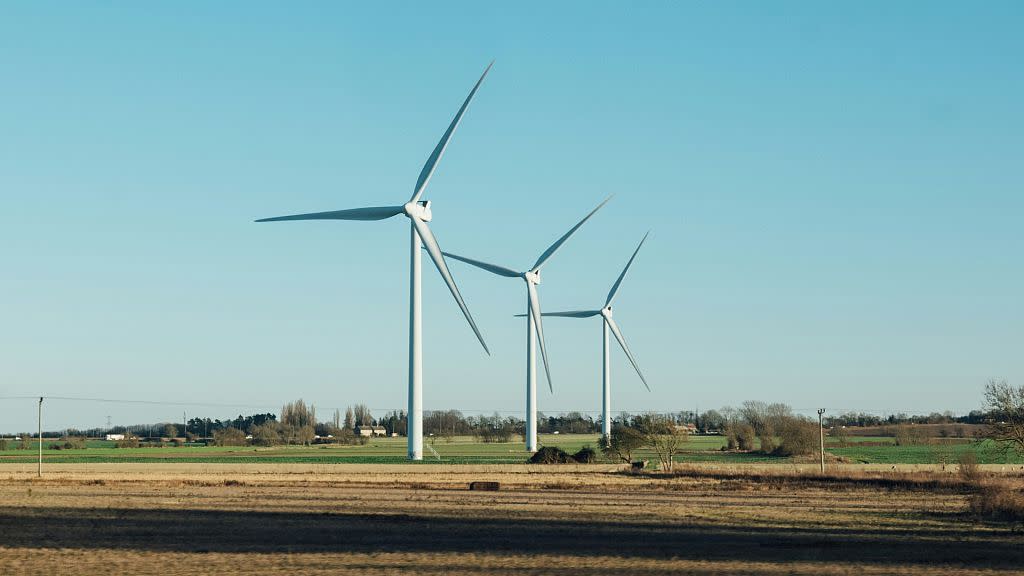New UK government lifts ‘absurd’ onshore wind ban: What could it mean for bills and net zero?

The UK’s new Labour government has scrapped a de facto ban on onshore wind farms in England, opening up the potential for every UK home to be powered by clean energy.
New Chancellor Rachel Reeves said in a speech on Monday that she would bring an end to the Conservatives' “absurd” restrictions on the construction of onshore wind farms. The Conservative Party were in power for the last 14 years.
Reeves added that decisions should be made nationally and not locally like they previously were. Labour says it will consult on whether large wind farms should be considered as nationally significant infrastructure projects. This would mean they would be signed off by energy secretary Ed Miliband rather than local councils.
There must be “trade-offs” when allowing developments to go ahead, Reeves said in her first major speech since taking the position, but the default answer cannot be no.
‘Our work is urgent’: Will the UK’s new Labour government prioritise the climate crisis?
Who is Marine Tondelier? Meet the Green leader who inspired France to vote against the far-right
“The story of the last 14 years has been a refusal to confront the tough and the responsible decisions that are demanded,” she said. “This government will be different and there is no time to waste.”
A study published in April by Friends of the Earth and researchers from the University of Exeter found that using less than 3 per cent of the land in England for onshore wind and solar could produce 13 times more clean energy than is now generated. That is enough to power all households in England twice over.
“The onshore wind ban has been in place for 9 years. We’ve been in government for 72 hours, we’ve lifted it,” Miliband added in a post on social media. “That’s the pace we’re going to move at.”
Why did the UK have a de facto ban on onshore wind?
Restrictions for the construction of onshore wind farms were put in place by former Prime Minister David Cameron in 2015. The rules meant that just a single planning objection could bring an end to a proposed project.
Michael Gove, then communities secretary, said last September that the ban would be lifted. Two footnotes in the rules around building homes and infrastructure in England, the National Planning Policy Framework (NPPF), meant it was still essentially impossible to get onshore wind projects off the ground, however.
As a result, no applications for new onshore wind farms appear to have been submitted since Gove made the announcement, according to the renewable energy planning database.
Hungary eyes EU consensus on geothermal energy future by end of year
Investment gaps and decrease in carbon sinks threaten EU climate progress – report
Now Labour have removed these footnotes in the planning policy, opening up the possibility of onshore wind projects in the UK. This brings onshore wind in line with the planning process for other energy developments, according to a policy statement from the government.
“Delivering our clean power mission will help boost Britain’s energy independence, save money on energy bills, support high-skilled jobs and tackle the climate crisis,” the government’s policy document reads.
“We are therefore committed to doubling onshore wind energy by 2030. That means immediately removing the de facto ban on onshore wind in England, in place since 2015.”
What will more onshore wind mean for the UK?
With the UK currently well off track to meet its clean energy commitments, more onshore wind could help meet these goals and bring down household bills, according to experts.
“By harnessing the country’s vast renewable power potential, the new government is staking its claim as a global leader in the green energy transition,” says Mike Childs, head of science, policy and research at Friends of the Earth.
“British onshore wind is one of the cheapest forms of energy available so the ban had in effect been pushing up bills,” says Jess Ralston, head of energy at non-profit the Energy & Climate Intelligence Unit (ECIU).
“More onshore wind means gas power stations are needed less often, reducing the UK’s foreign gas dependency as North Sea output continues its inevitable decline.”


